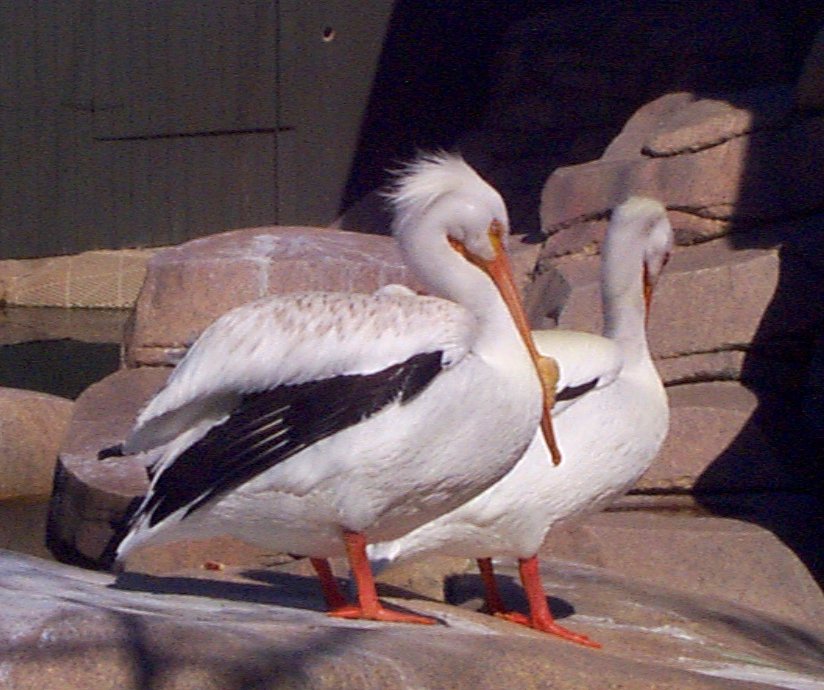 General Information:
General Information:
 These
pelicans are very fond of company, and they usually stay together in large
colonies to bring up their families. Most of the time they
can be seen together in groups on feeding trips. These pelicans are
found near lakes, salt bays, marshes, and beaches. The bird is found
in such states as northern California, western Nevada, Utah, Colorado,
northeastern South Dakota, southwestern Minnesota, and occasionally on
the central coast of Texas. During winters the pelican is found
along the Pacific coast from central California and southern Arizona south
along the western lowlands of Mexico to Guatemala and Nicaragua and from
Florida and the Gulf states south along the Gulf coast of Mexico to Tabasco
and the state of Yucatan. The White Pelican's nest is usually constructed
out of sticks, grasses, and reeds built of the ground. Usually an
island or an inland lake is chosen. Two to four chalky white eggs
are produced, and the incubation period is 1 month. Both parents
help in feeding the young, they do this by regurgitating food and the young
stick their heads into the parents beak to feed. Adults rarely make
any noise, but when they do it is usually a low grunt. However, the
young feel the need to squeal, and are very noisy. These
pelicans are very fond of company, and they usually stay together in large
colonies to bring up their families. Most of the time they
can be seen together in groups on feeding trips. These pelicans are
found near lakes, salt bays, marshes, and beaches. The bird is found
in such states as northern California, western Nevada, Utah, Colorado,
northeastern South Dakota, southwestern Minnesota, and occasionally on
the central coast of Texas. During winters the pelican is found
along the Pacific coast from central California and southern Arizona south
along the western lowlands of Mexico to Guatemala and Nicaragua and from
Florida and the Gulf states south along the Gulf coast of Mexico to Tabasco
and the state of Yucatan. The White Pelican's nest is usually constructed
out of sticks, grasses, and reeds built of the ground. Usually an
island or an inland lake is chosen. Two to four chalky white eggs
are produced, and the incubation period is 1 month. Both parents
help in feeding the young, they do this by regurgitating food and the young
stick their heads into the parents beak to feed. Adults rarely make
any noise, but when they do it is usually a low grunt. However, the
young feel the need to squeal, and are very noisy.
|

